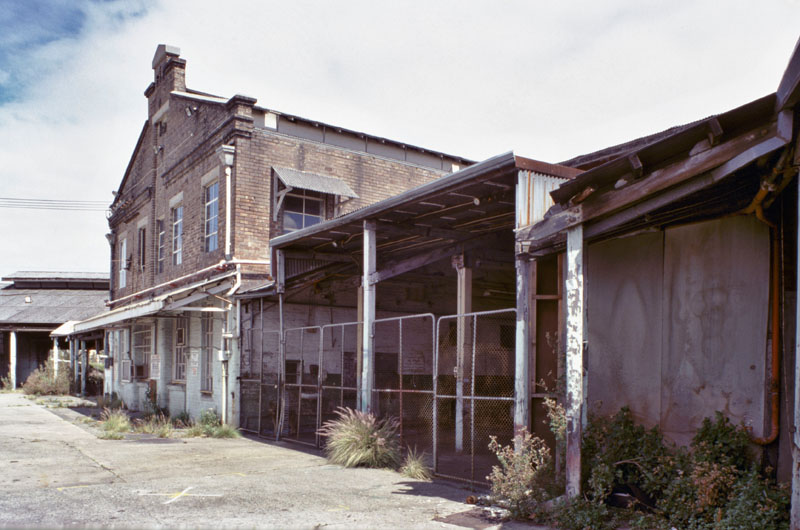McCafferys Hill
Date Built: 2002-2004
Architect: Daryl Jackson Robin Dyke
McCafferys Tower, Mews, Johns Court, The Stables, Chalet, Cliff Top. 17-storey tower, three-and four-storey buildings. Highest point of the peninsula. Overlooks Saunders’ quarries. Site of McCafferys haulage company
McCafferys Hill
1990
In 1984, as industries quit Pyrmont, the state government resolved to redevelop the area, and in 1987 decided that the peninsula needed its own plan. In the same year CSR asked Lend Lease to study the feasibility of redeveloping the whole industrial site.
Many studies ensued: the Pyrmont-Ultimo Heritage Study (1990), a Social Impact Assessment (1991), and a Regional Environmental Plan (1992). In 1993 the Pyrmont-Ultimo Urban Development Plan was approved, and so was a Master Plan for Pyrmont Bay.
As historical sources the most useful studies were archaeological surveys (such as that by Casey and Lowe), summed up in the Sydney Harbour Foreshore Authority’s Jacksons Landing Interpretation Strategy, and Jane Bennett’s extraordinary series of paintings. A few years later John Broadbent complemented these studies with his comprehensive history of the ecology of the peninsula.
Pyrmont residents were deeply divided: some were forced to leave the area, others welcomed development, but in 1979 opponents formed UPROAR (Ultimo Pyrmont Residents Opposed to Arbitrary Redevelopment) and endured years of being consulted (or, in their view, coerced). In August 1992 a few activists proclaimed the Republic of Pyrmont. In this brilliant but ultimately vain gesture the republicans issued visas, and publicised their critique of top-down planning, and in particular to Jacksons Landing, and the proposed casino and helipad.
Meanwhile in 1997 Lend Lease bought the CSR site, and by April 1999 Jacksons Landing was under construction. The intent was to preserve as much heritage as possible, but the haulage complex was demolished to make space for residential apartments. 4,500 cubic metres of sandstone was quarried from the site, and stockpiled for future use in the City. In John Street, only one pub survived, and there was very little community to animate the public school, which was now a community centre.













